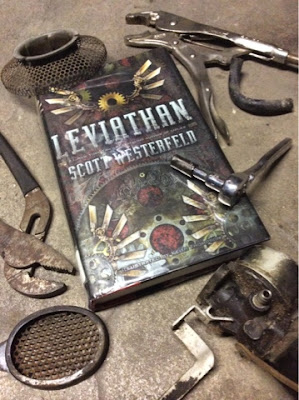Book Review: Leviathan
 A steam punk novel where machines battle gene spliced leviathans? Scott Westerfeld's first novel in the Leviathan series was engaging and fanciful without becoming overly technical.
A steam punk novel where machines battle gene spliced leviathans? Scott Westerfeld's first novel in the Leviathan series was engaging and fanciful without becoming overly technical.His fictional world blends historic facts surrounding World War I with steam punk science fiction. The spawn of Darwin's legacy (gene spliced fanciful creatures) are pitted against the steam mechanized dreadnoughts of Europe.
Caught in the middle is a prince without a crown and a cockney lass masquerading as a boy so she can fly in the Royal Air Force. There are plenty of secrets left to be revealed in sequels as the whole world boils into war.
Though nodding towards Darwin as the originator of the Leviathan, Westerfeld's creatures are more about DNA than millions of years of evolutionary processes. He has clearly used science fiction to craft these fanciful creatures.
I was also pleased to find that the language was appropriate for preteens and teens. So often authors of young adult literature feel they must sprinkle course language to keep the reader's attention. I hope this continues through the rest of the series. Westerfeld also takes time at the books conclusion to share with readers which parts are founded in history and which are fiction. This serves well to encourage readers to dig deeper into history and discover the actual mysteries and intrigue of our past.



Comments
Post a Comment